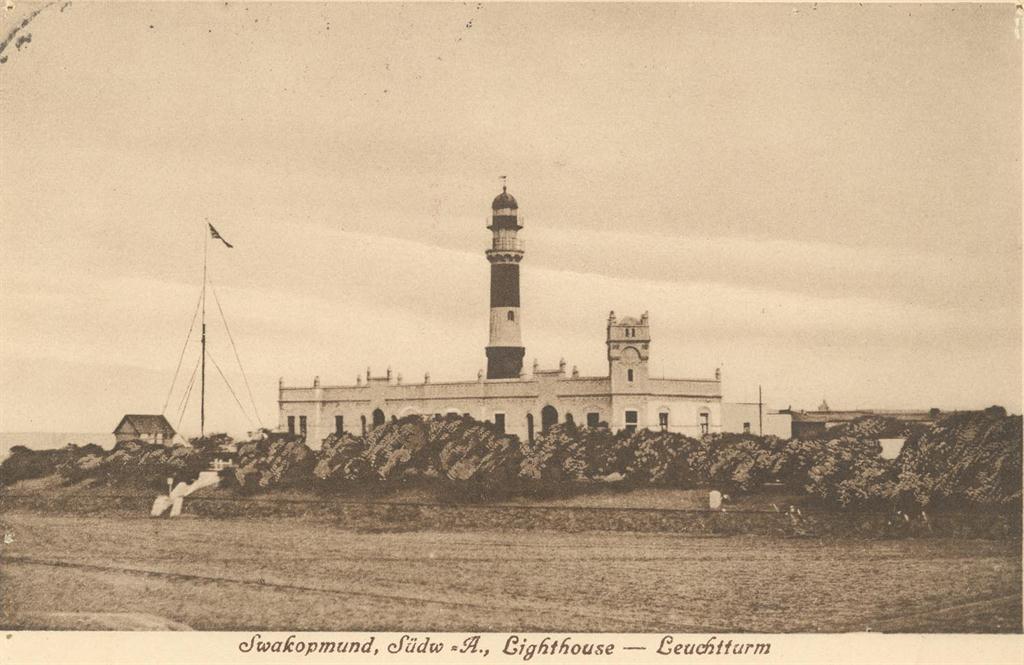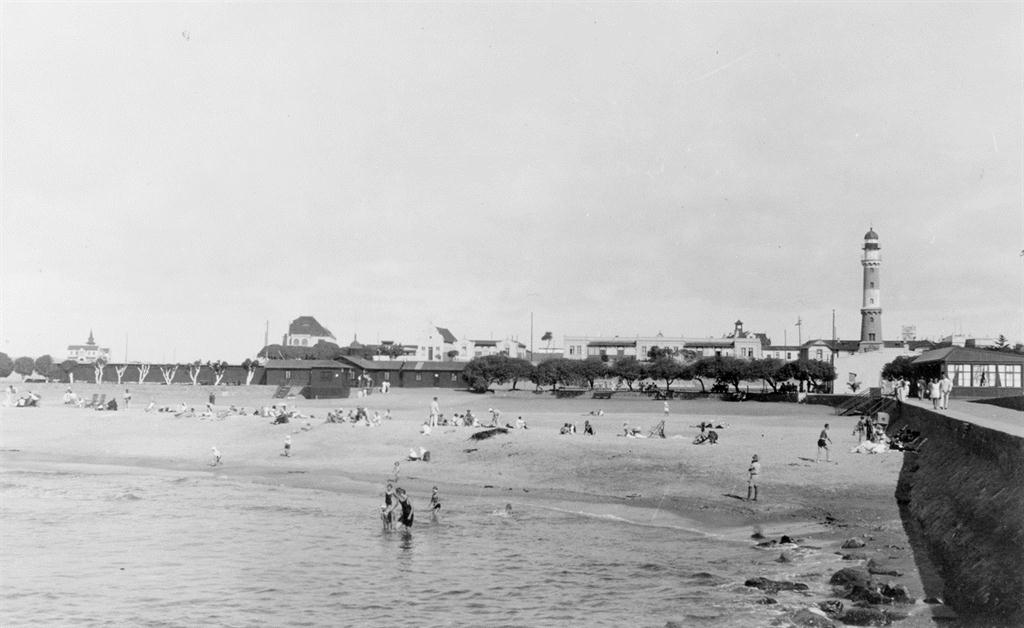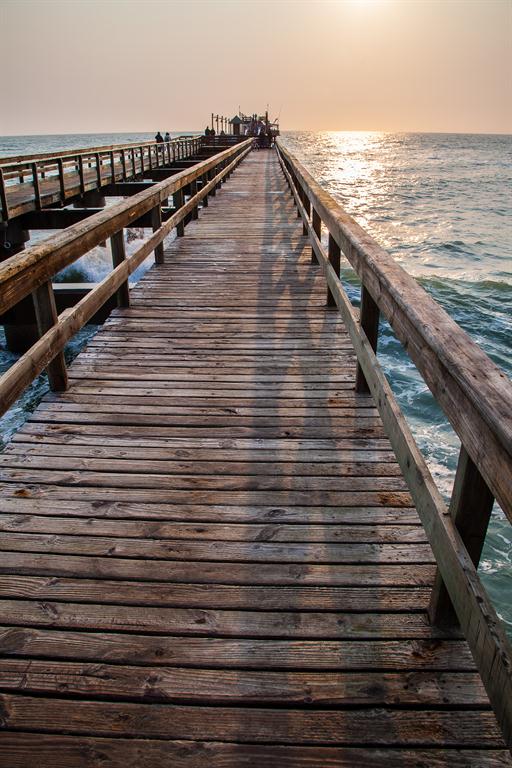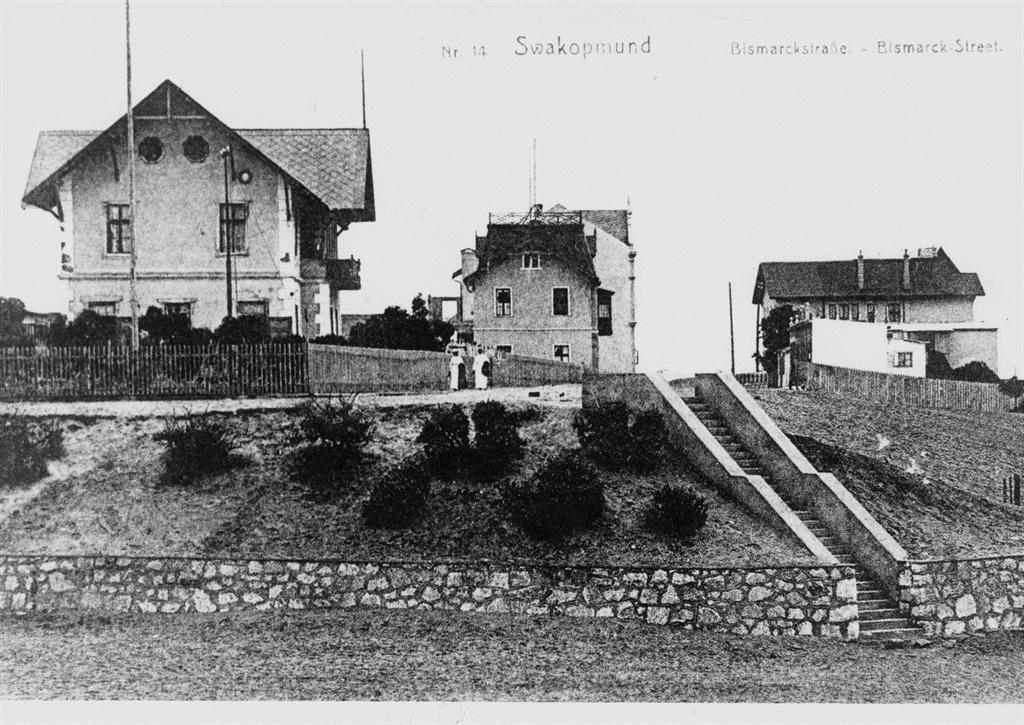Swakopmund provides everything that a proper seaside resort should… nice, sandy beaches, a seaside promenade, loads of accommodation ranging from simple to luxurious, great restaurants and palm tree-lined streets. It also serves as a welcome relief from the blistering inland heat during the summer months, but the town's rich history with its beautiful historical buildings definitely adds to its popularity, as well as being another reason to visit.
This year the little coastal town is also celebrating its 125th anniversary. Only two years older than Windhoek, Swakopmund was founded as a harbour under the command of Curt von Francois on 4 August 1892, erecting two beacons on a sand dune assumed to be close to the present lighthouse, to mark this occasion. The site for town was chosen mainly because of the access to water thanks to the Swakop River.
The jetty is born
Initially the population of Swakopmund consisted of only 120 Schutztruppe and 40 settlers. The barren beach and desert to the east offered no shelter and forced the settlers to build caves on the beach to protect themselves against the hostile weather.
Before a breakwater - or the Mole as it came to be known - was built, everything had to be offloaded from ships by using special boats handled by men from the Kroo tribe of Liberia. At that time up to 600 Kroo tribesmen were employed by Woermann Line.
With building material in short supply, the first houses were all prefabricated structures.
The small harbour that the Mole (built in 1898) created was not a permanent solution for receiving ships and soon silted up. A temporary wooden jetty was built and was finished in 1905 just as the Mole became completely unusable. In 1912, the construction of an iron jetty was started. This jetty has survived and is definitely one of the true standout landmarks of the town. Today, it is a popular place for people taking strolls as well as housing the popular Jetty 1905 restaurant.
Swakopmund slumps
Swakopmund was the closest port to the interior (the other port being Lüderitz), and it was therefore important to efficiently transport goods arriving here, inland. Up until then, oxen and wagons were used, but the trek on the old Bay Road was no easy feat, having long waterless sections which placed stress on the animals and their handlers. Therefore, a narrow-gauge railway was built during 1900 that reached Karibib and by 1902 reached Windhoek.
In 1902 the well-known lighthouse was built and stood only 11 metres high. During 1910 a further 10 metres was added in order to increase its visibility from sea.
After the Union of South Africa defeated the Germans and took control of the country in 1915, all harbour activities shifted to Walvis Bay. This created an economic slump for the town, with some businesses closing and its inhabitants diminishing. However its natural potential as a tourist destination, as well as a discovery in the desert close to the town, would create the Swakopmund we know today.
'Lappres dorp'
In 1928 radioactive material was discovered in the desert east of the town would greatly affect the future then sleepy coastal town. During 1966 Rio Tinto started prospecting for uranium and in 1975 Rössing Uranium became operational 70km outside of town. It would become one of the world's largest opencast uranium mines. This created an influx of people and the expansion of the town's infrastructure.
Swakopmund realised its potential for tourism when in 1940 tents were erected to accommodate visitors. In 1947 it had grown so big that the tent town even acquired the name of 'Lappiesdorp'.
Through 125 years Swakopmund has seen a lot of changes. Today the town's population at more than 45 000 inhabitants is considerably bigger than it was back in 1905 when only 1 433 people were considered residents. It has significantly changed in appearance and also expanded to the north and east through the years to accommodate the increase in population, holiday homes and tourist accommodation. Even with all the changes over 125 years, Swakopmund has managed to retain its old-world charm and warmth and it's easy to see why it is one of the top tourist destinations in Namibia.
This year the little coastal town is also celebrating its 125th anniversary. Only two years older than Windhoek, Swakopmund was founded as a harbour under the command of Curt von Francois on 4 August 1892, erecting two beacons on a sand dune assumed to be close to the present lighthouse, to mark this occasion. The site for town was chosen mainly because of the access to water thanks to the Swakop River.
The jetty is born
Initially the population of Swakopmund consisted of only 120 Schutztruppe and 40 settlers. The barren beach and desert to the east offered no shelter and forced the settlers to build caves on the beach to protect themselves against the hostile weather.
Before a breakwater - or the Mole as it came to be known - was built, everything had to be offloaded from ships by using special boats handled by men from the Kroo tribe of Liberia. At that time up to 600 Kroo tribesmen were employed by Woermann Line.
With building material in short supply, the first houses were all prefabricated structures.
The small harbour that the Mole (built in 1898) created was not a permanent solution for receiving ships and soon silted up. A temporary wooden jetty was built and was finished in 1905 just as the Mole became completely unusable. In 1912, the construction of an iron jetty was started. This jetty has survived and is definitely one of the true standout landmarks of the town. Today, it is a popular place for people taking strolls as well as housing the popular Jetty 1905 restaurant.
Swakopmund slumps
Swakopmund was the closest port to the interior (the other port being Lüderitz), and it was therefore important to efficiently transport goods arriving here, inland. Up until then, oxen and wagons were used, but the trek on the old Bay Road was no easy feat, having long waterless sections which placed stress on the animals and their handlers. Therefore, a narrow-gauge railway was built during 1900 that reached Karibib and by 1902 reached Windhoek.
In 1902 the well-known lighthouse was built and stood only 11 metres high. During 1910 a further 10 metres was added in order to increase its visibility from sea.
After the Union of South Africa defeated the Germans and took control of the country in 1915, all harbour activities shifted to Walvis Bay. This created an economic slump for the town, with some businesses closing and its inhabitants diminishing. However its natural potential as a tourist destination, as well as a discovery in the desert close to the town, would create the Swakopmund we know today.
'Lappres dorp'
In 1928 radioactive material was discovered in the desert east of the town would greatly affect the future then sleepy coastal town. During 1966 Rio Tinto started prospecting for uranium and in 1975 Rössing Uranium became operational 70km outside of town. It would become one of the world's largest opencast uranium mines. This created an influx of people and the expansion of the town's infrastructure.
Swakopmund realised its potential for tourism when in 1940 tents were erected to accommodate visitors. In 1947 it had grown so big that the tent town even acquired the name of 'Lappiesdorp'.
Through 125 years Swakopmund has seen a lot of changes. Today the town's population at more than 45 000 inhabitants is considerably bigger than it was back in 1905 when only 1 433 people were considered residents. It has significantly changed in appearance and also expanded to the north and east through the years to accommodate the increase in population, holiday homes and tourist accommodation. Even with all the changes over 125 years, Swakopmund has managed to retain its old-world charm and warmth and it's easy to see why it is one of the top tourist destinations in Namibia.










